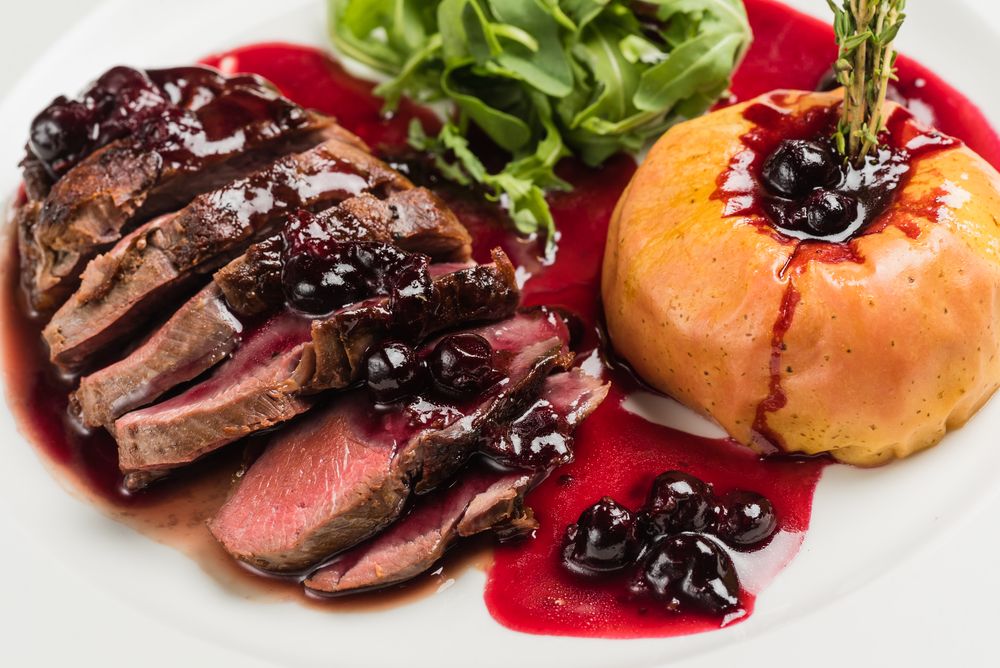Interesting facts from the world of cooking
 While preparing food, many housewives do not even think about when and how people learned about certain ingredients, products, or how they invented the necessary kitchen tools. In this article you will find interesting facts from the world of cooking, which you may be surprised a lot.
While preparing food, many housewives do not even think about when and how people learned about certain ingredients, products, or how they invented the necessary kitchen tools. In this article you will find interesting facts from the world of cooking, which you may be surprised a lot.
1) Nutmeg
The nutmeg tree is the only tree that actually produces two kinds of spices: nutmeg (the nut that many of us are familiar with) and the less well-known mace – dried prismyanik bright red color. Matsis or nutmeg became very popular in the 18th century, when it began to be added as a spice to meat dishes, and it is also the main ingredient of the French traditional white sauce when it is soaked with onions in hot milk and then added to milk flour and butter. The result is a world famous bechamel sauce. Matsis is actually a red outer layer of brown nutmeg.
2) Sushi
The world-famous Japanese sushi dish has not Japanese roots at all. Its variation appeared in the 4th century BC in Southeast Asia, where fish was salted and fermented with rice added to it. After a few months of fermentation, the fish was removed from the rice that was thrown away. The dish was common in China, and the Japanese learned to cook it in the 8th century. The Japanese loved to eat fish with rice, so Japanese sushi appeared, and the fish was no longer fermented, but raw. However, Koreans make rolls and sushi not with fish, but with meat, although the rest of the products are the same.
3) Russian service
Although many European dishes have French roots, Russians came up with a way of serving at the table when separate dishes were served: this was how dishes were served on the royal table. In France, all the prepared dishes were exhibited on the table on numerous plates, which was quite wasteful. However, at many feasts today use exactly this method of serving. Russian service is much more convenient, as it allows cooks to prepare dishes at restaurants one after another, and the client does not have to wait until all dishes are served at the same time.
4) The oldest restaurant
The most ancient restaurant and hotel is Stifskedder St. Peter’s restaurant at the monastery walls of St. Abbey. Petra, which is located in Salzburg, Austria. The first mentions of this place appeared in 803, and since then the doors of this institution have never been closed. This establishment is considered to be the oldest non-stop restaurant on the planet, and on the hotel’s website you can see the inscription: “Genuine Salzburg hospitality of the last 1200 years.” Abbey of sv. Peter is the oldest monastery of the German-speaking world, it was founded in 696 by Saint Rupert.
5) Can opener
The first cans in which food was stored appeared in the 1770s in Holland and were used by the Dutch military. However, the first patent for the canning method was issued in 1810 to the English merchant Peter Durand. The first cans were usually heavier than their contents, and could be opened with a variety of items that were on hand, although there were instructions on them: “Cut the round top cover near the edge of the can with a chisel and hammer.” However, these tools were used to open cans until 1855, when the first can opener for canned food appeared. It looked more like an ordinary knife, and in 1870, it was replaced by an opener with a rotating wheel, which was much more convenient. This tool was so easy to use, as it did not require remarkable strength. In 1925, cans were opened with the help of openers with double wheels, which we used to see today.
6) Diet soda
The very first diet soda appeared in 1952 and was named No-Cal Soda-Pop. Hyman Kirsch and his son Morris, who immigrated from Russia and settled in New York, were the first to sell soda in 1904. Their collaboration with a Jewish sanatorium for the treatment of chronic diseases led to the creation of a sugar-free drink for diabetics who were treated at this sanatorium. Niemann and Morris developed a series of sugar-free soft drinks with zero calories and chocolate and cherry flavors. In the 2000s, the beverage company INOV8 revived the drink.
7) Coke
Despite its name, today among the ingredients of Coca-Cola you can find sugar, citrus oils (orange, lemon or lime), tamarind, cinnamon, vanilla and acid, but not a nut, but certainly not cocaine. Cola producers added microcomponents to the drink in order to highlight their special taste. These components could be nutmeg and a large number of other ingredients, but the main components that distinguish cola are still cinnamon and vanilla. Kislinka is often provided with phosphoric acid, sometimes with citrus acid.




